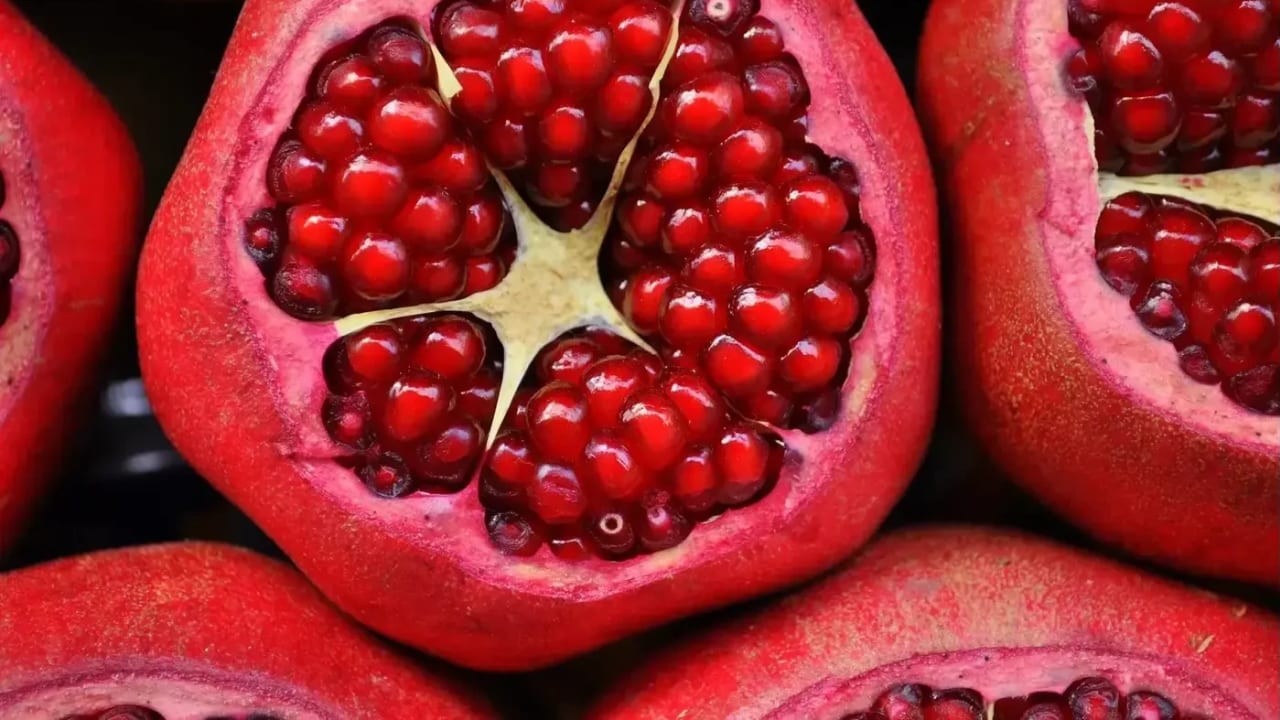Jerusalem Post
ByELI ASHKENAZI
The pomegranate – a symbol of Rosh Hashanah – is one of the healthiest fruits. An Israeli researcher highlights facts you didn’t know about this delicious red fruit.
Pomegranates with a light, pale peel are less photogenic than their counterparts boasting a bright, photogenic red peel. If the goal is an Instagram-worthy photo for Rosh Hashanah, it’s clear which one is preferable. However, it turns out that the light-colored pomegranate has other advantages, more significant than outward appearance, and is considered better and of higher quality than the red pomegranate. This finding, along with others, has recently emerged from several scientific studies conducted in Israel.
Research conducted at the Migal Research Institute in collaboration with the Volcani Institute sheds new light on the pomegranate’s health benefits, which will earn a place of honor on the upcoming holiday table. The findings prove that the pomegranate is one of the healthiest fruits available. The fruit contains high levels of powerful antioxidants that protect the body from serious diseases. Additional studies conducted at research institutes in various countries have revealed further findings about the pomegranate’s virtues. A related article was recently published in the scientific journal Nature.
Ahead of Rosh Hashanah, Prof. Rachel Amir, a senior researcher at the Migal Research Institute and Dean of the Faculty of Sciences at the Tel-Hai Academic College, presents five interesting facts about the pomegranate:
1. Pomegranate benefits against chronic diseases – pomegranate seeds are rich in phytochemicals and antioxidants that help the body fight free radicals, which can lead to diseases such as diabetes, high blood pressure, cancer, atherosclerosis, heart and vascular diseases, cataracts, Alzheimer’s, and more. The seeds are rich in polyphenols, mainly anthocyanins, which give the red color. Therefore, when consuming only the seeds, it is best to eat the red ones.
2. The peel holds concentrated benefits – research shows that antioxidant activity in the peel is 40 times higher than in the seeds! This is due to a unique group of tannins found only in the peel at very high concentrations. Therefore, it is highly important to press the fruit with the peel, similar to extracting orange juice. These tannins help inhibit the growth of various cancer cells, prevent atherosclerosis, improve blood flow, lower “bad” cholesterol, and reduce blood pressure.
3. What does the peel reveal? – today, there is a variety of pomegranate cultivars. Usually, there is a correlation between the color of the seeds and the peel. Pomegranates with a light yellow-green peel contain relatively high levels of tannins, making them preferable for juicing, while red-peeled pomegranates contain relatively lower tannin levels. Therefore, pomegranate varieties historically grown in Israel, such as Melisi and Rosh Pard, which have light (and perhaps less visually appealing) peels, are considered better and of higher quality than red-peeled pomegranates.
4. Unknown biochemical pathways – although the active health-promoting compounds are known, the biochemical pathway leading to their creation is not. In recent years, research at Migal-Tel Hai and at the Volcani Institute’s Neve Ya’ar facility has used genomics and compound profiling tools to identify genes associated with these pathways, as well as regulatory factors that control them. This accumulated information aids breeding programs, ultimately enriching these compounds in pomegranates and increasing health benefits for consumers.
5. Research using roots – since the research also requires molecular biology and genetic engineering tools to locate genes, it is currently conducted on root cultures. Growing roots and expressing genes in them is relatively faster, cheaper, and easier than growing the tree and producing fruit. Roots contain the active compounds found in the peel, allowing relatively rapid identification of the genes involved in creating these compounds.















